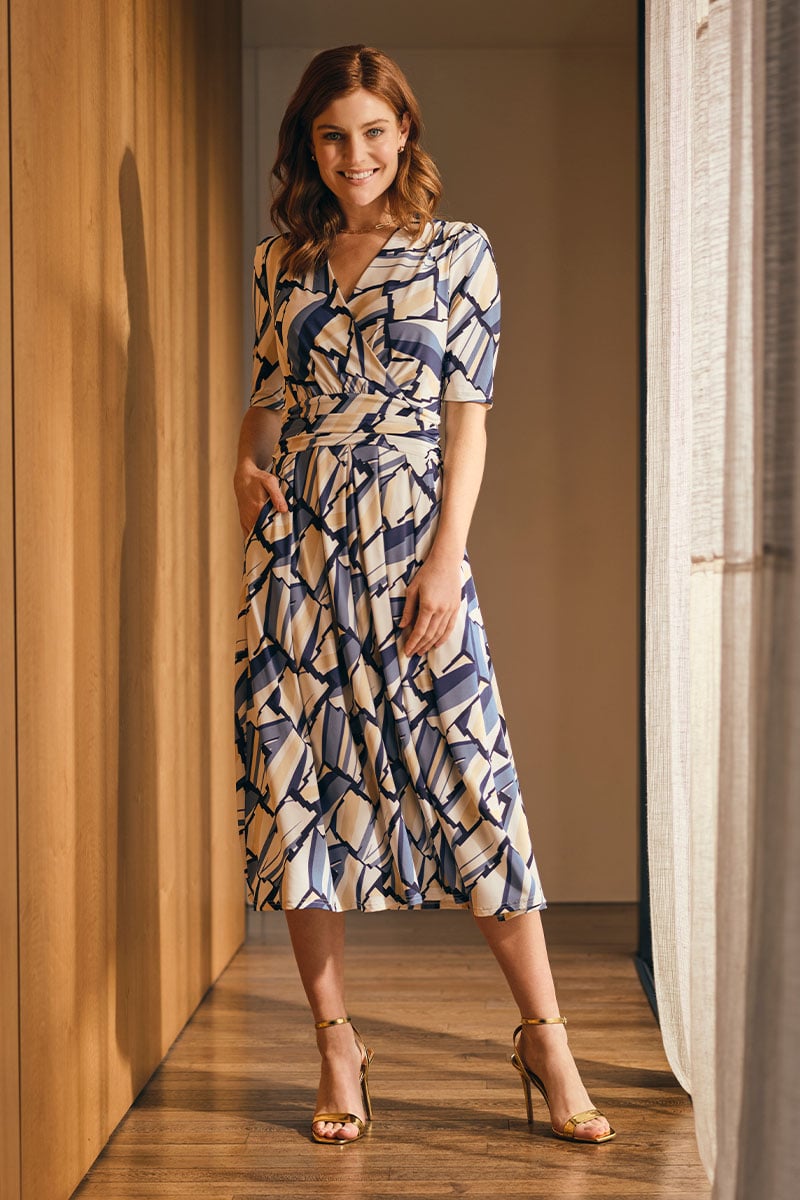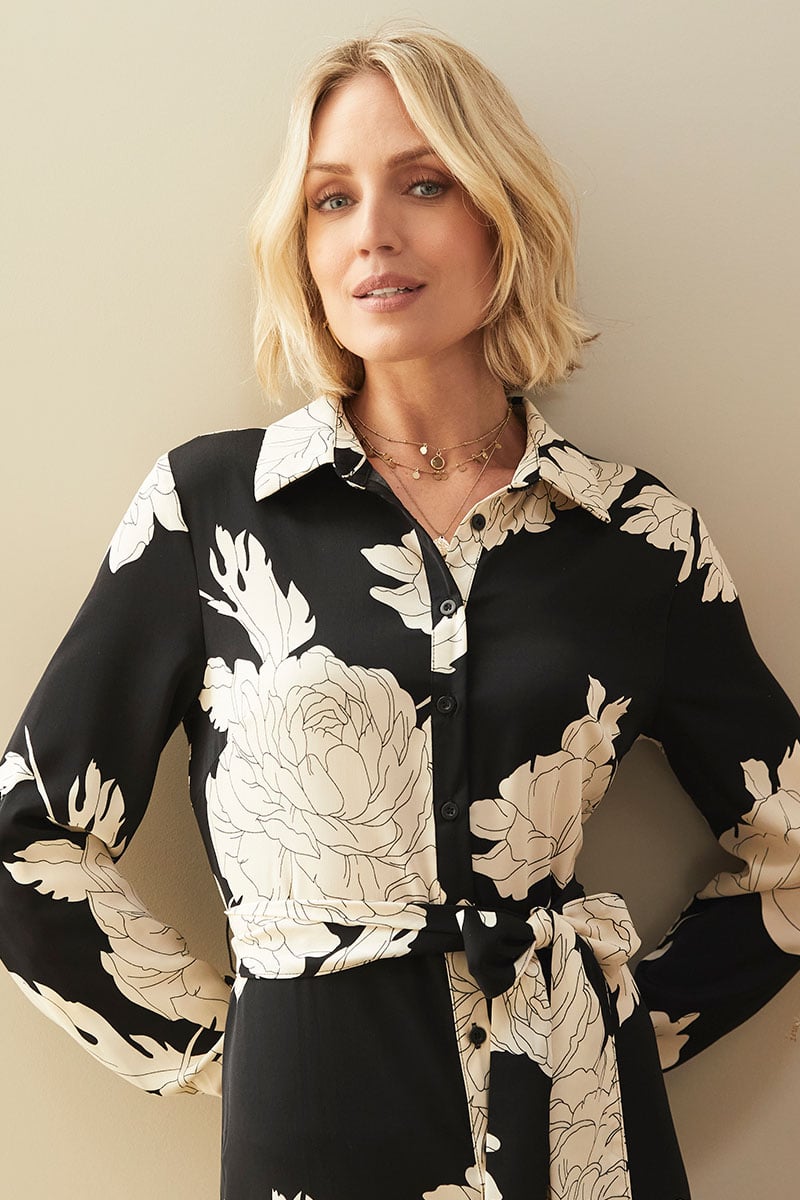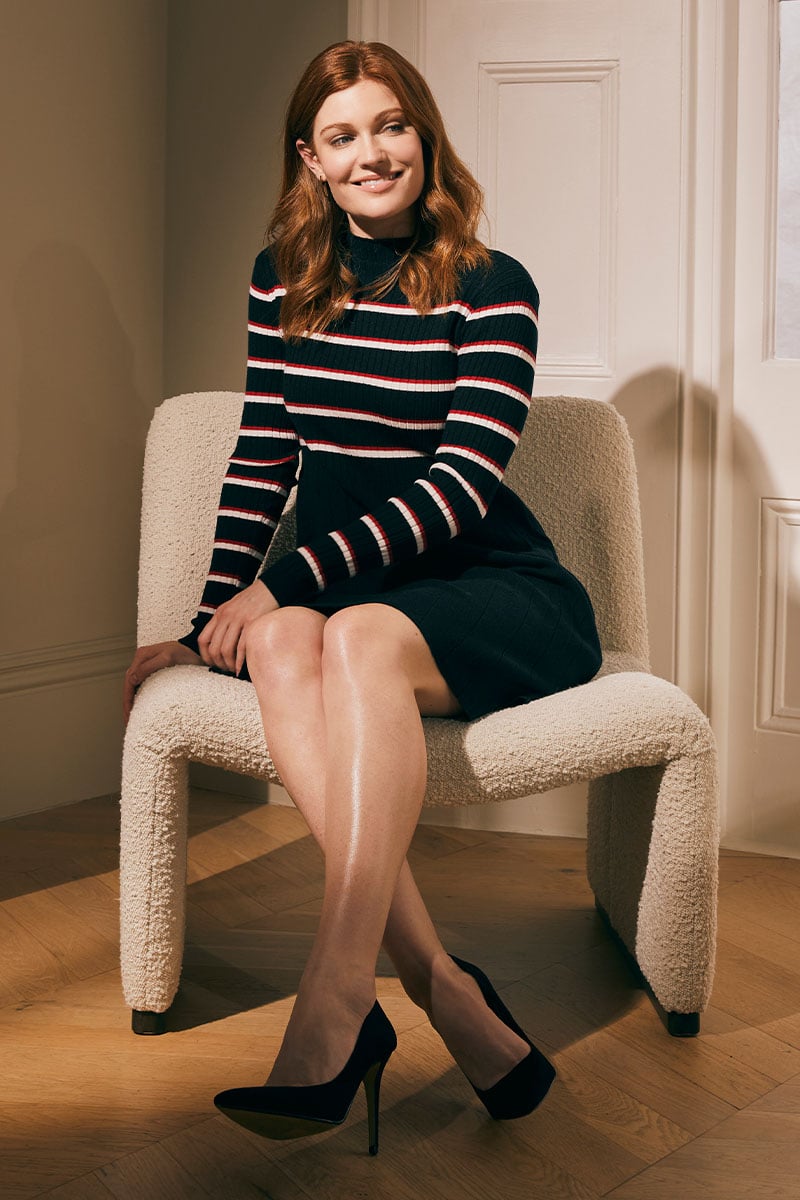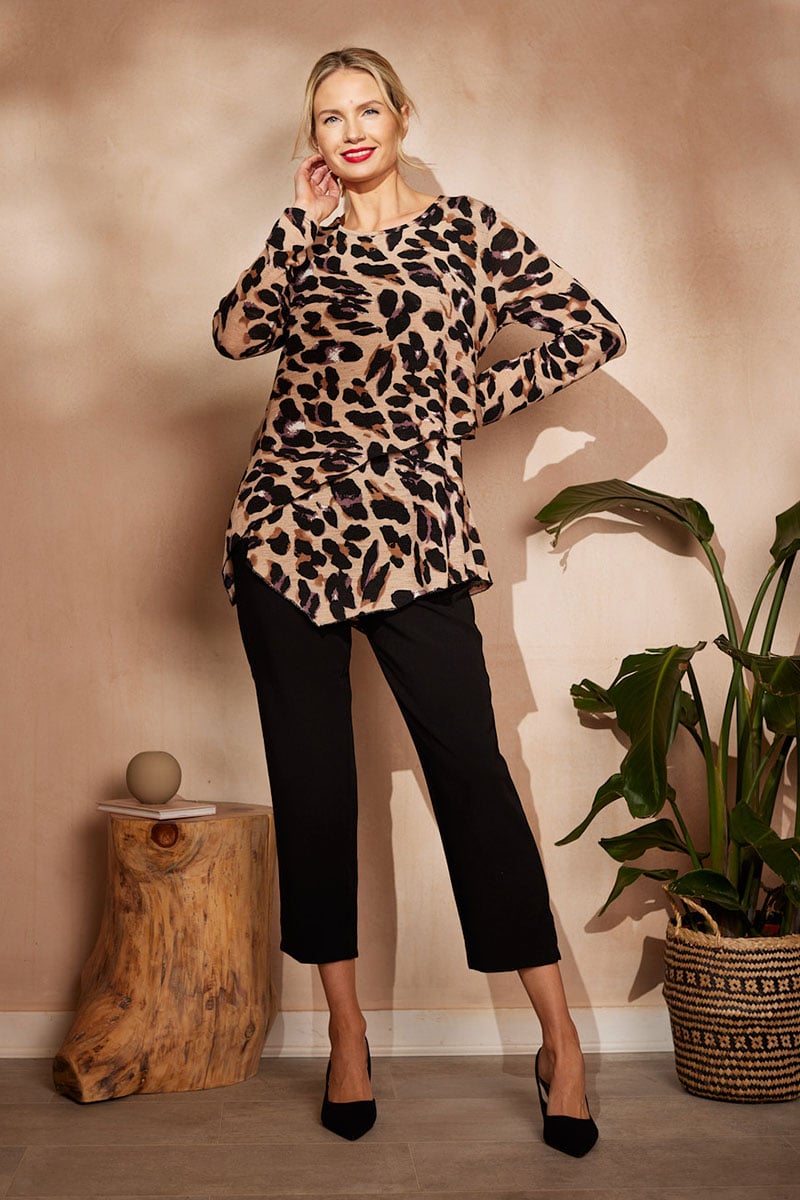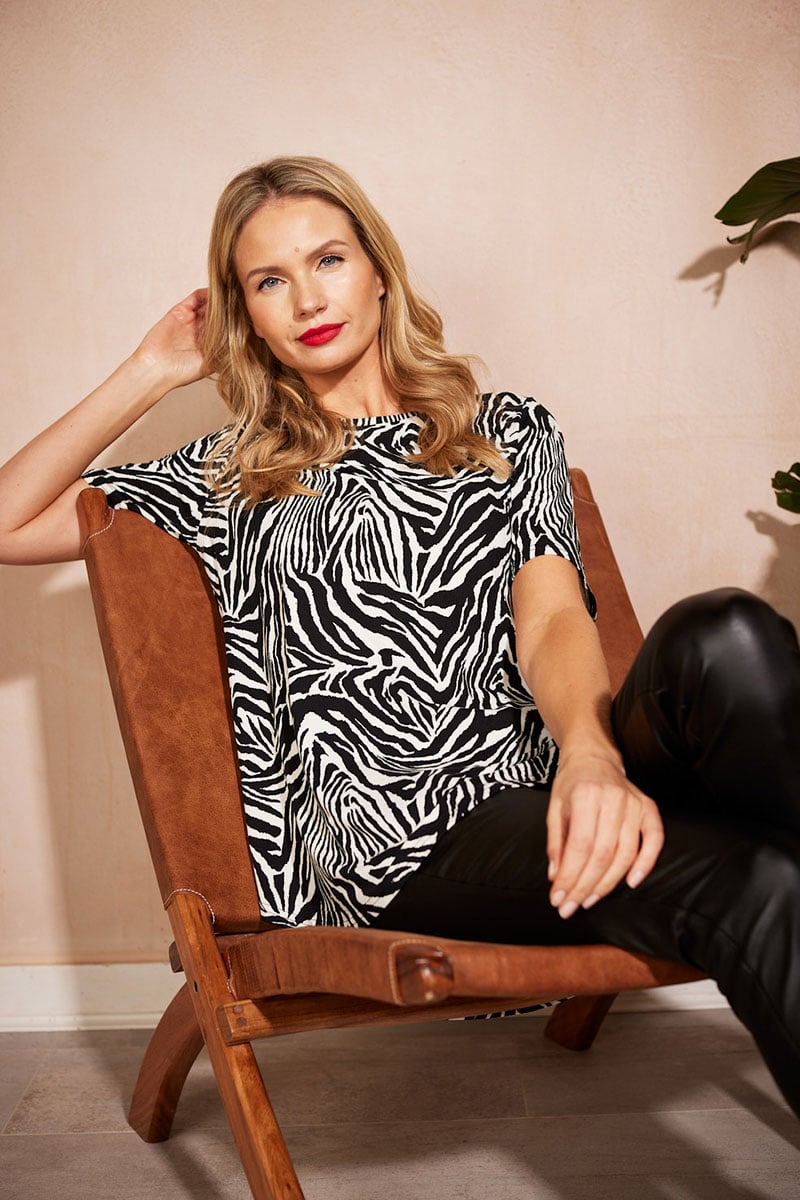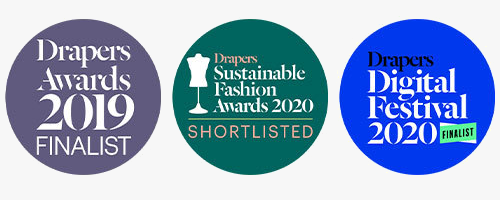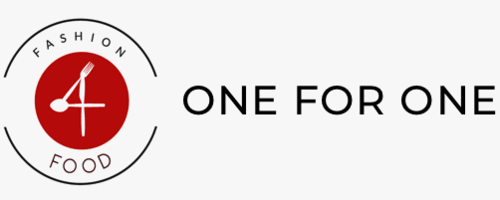WHAT TO WEAR
What To Wear To A Job Interview
Congratulations you got the interview! But now that you have a date to meet your potential employers, you’ll need to look your very best. A stylish outfit, that you feel comfortable in can boost your confidence and help you to present your best self during your interview. Whether it's the perfect colour blue dress or a flattering floral blouse your outfit can say a lot about your personality.
Read on to find inspiration on our favourite interview-ready looks from business smart to casual dress codes, we’ve got you covered.
What to wear to a job interview
Look presentable and polished; it's an important way to show that you’ve paid attention to your appearance and understand the importance of looking professional.
Remember to dress appropriately for the specific role you are going for. Corporate positions will require conservative dress codes: smart tailored skirts, wide leg trousers, collared button down shirts and blazers. Pay attention to skirt hemlines; being sure to pick a flattering length we personally like the classic midi skirt since it's flattering and effortlessly chic.
Creative industries are often more relaxed when it comes to dress code rules. Think about dressing to show your personality perhaps using a bold animal print top as a statement piece for your outfit or play with proportions and pair a pretty printed peplum top with cropped trousers.
Putting your best self forward
Your style choice can determine whether you nail the first impression your employer makes of you. The right outfit will reflect who you are as a person.
Remember to choose clothes you’re comfortable in; if you prefer to wear dresses over trousers wear a dress because that's a reflection of your style and you'll feel more comfortable and relaxed while you're being interviewed.
What to wear to a video interview
Your employers will take as much notice of your appearance online as they would of you in person. Make the effort to dress exactly as you would if you were meeting at the workplace. Remember that some tight repetitive prints (like thin stripes with narrow spacing or small checks) can come across poorly on camera because they can look like they're moving - this is called the moiré effect and it can be a little distracting.
Dressing smart also makes you feel sharper. This can be helpful, as it can be challenging to get into a professional mindset when you are still sitting in your living room.
Remember to light the room properly so you can be seen clearly, and take care to appear as groomed as possible, with neat hair and modest accessories.
Finally, don’t only dress your top half. You may need to get out of your seat unexpectedly and it’s not a great look to reveal you’ve teamed your smart shirt and blazer with your stripy pyjama bottoms!
What to wear to a retail interview
Retail environments can be tricky for style choices. Take time to research the company brand and try to reflect their style ethos to show you understand it.
Some retail brands will want to see how aware you are of current trends, so use your outfit to show off what you know: if shirt dresses are the current go-to shape, or that the colour red is trending wear something that matches this to show you have your finger on the pulse.
What to wear to an interview for hospitality roles
Job interviews for positions in hospitality are often more relaxed, depending on the responsibility level. Many positions are casual, so you’ll have some flexibility to wear something more comfortable like a nice top and trousers. Management positions will require more formality, but if in doubt you can send an email to the HR department to check what dress code is expected.
Be careful not to go overboard on statement clothing or accessories. Even if the role you’re applying for something fun, like a bartender. Let your outfit show some personality, but choosing too many colours or bold patterns may give a message that you don’t take things seriously.
What to wear to a corporate interview
Many corporate roles will have a formal dress code, so make sure you research the rules carefully.
Think about classic tailored shapes such as a flattering button front shirt dress and a tailored jacket or a figure flattering peplum blouse and a skirt. You could also opt for a knee length knit dress and a pair of heeled court shoes for an effortlessly chic outfit.
These days ‘business casual’ is generally an invitation to wear a relaxed version of a ‘business formal’ outfit. Think less structured tailoring; like a tunic top balanced with cropped trousers. Remember to still take care to present a professional appearance suitable for the workplace.
What to wear to a casual interview
When interviewing for roles in creative industries, or for a trendy start-up, you most likely won’t need to follow a formal dress code. Denim jeans, and often trainers, may be acceptable. But don’t forget this is still an interview and impressing your employers is key.
If opting for denim, choose smart-looking styles in darker shades. Avoid rips or holes. Don’t wear anything that looks like it’s seen better days, and make it clear that you’ve put some thought into your outfit. If in doubt, always think of elevating your style rather than dressing down.
Five steps to getting the perfect interview style
Follow these go-to steps to make sure you impress your employers and nail that job interview!
Step One: Research the company dress code. Elevate your style, but keep it modest and don’t wear anything too flamboyant. Think style over glamour.
Step Two: Choose seasonal clothes. Light breathable fabrics during summer months (linen and cotton are great options), and warm but elegant knits on colder days. Think about layering too - a smart longline coat when there’s a chill in the air, or a cropped lightweight jacket if it’s warm outside.
Step Three: Research what’s trending in the fashion world and make your own contribution if you can. Some employers will really notice this and be impressed.
Step Four: Avoid anything scruffy or worn out. Take pride in your appearance and show that you respect yourself and the work environment. Steer clear of sportswear, loungewear or glam partywear.
Step Five: Be comfortable. Stepping out in clothes that make you feel good will work wonders on your positive mindset. Enjoy showing off your chosen style. Don’t forget, this is your time to shine.

